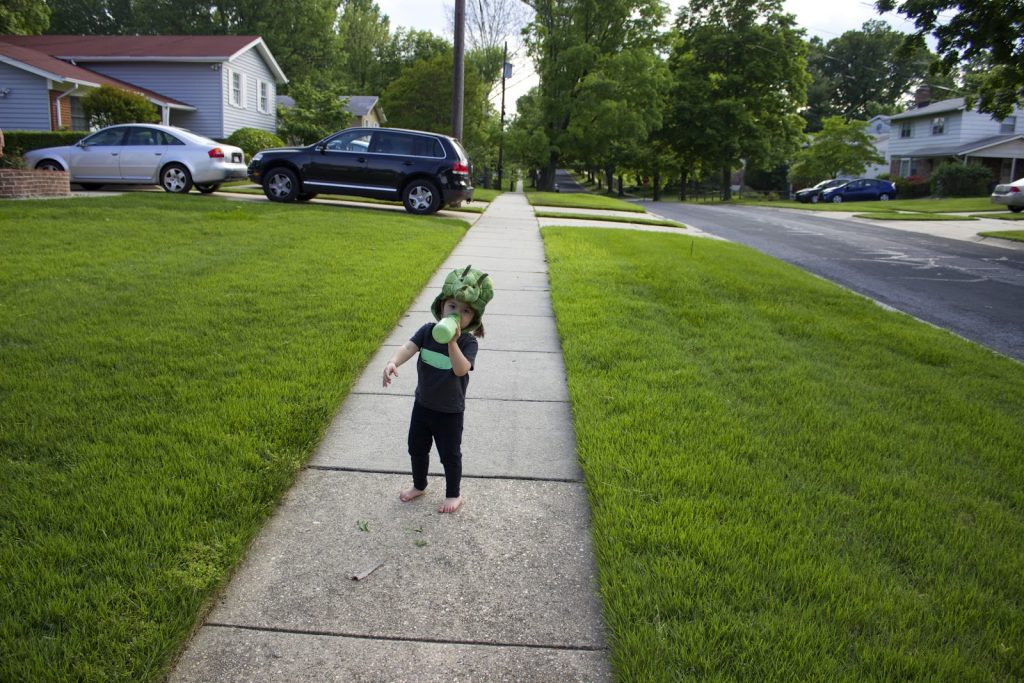
Today, Rita did Moxie’s hair in a pretty cool way. I wanted to get a couple pictures of it for fun. So I decided to take Moxie outside. (Cool photography trick: take pictures outside where there is light.)
However, Moxie had some conditions.
The first three were easily satisfied. She needed a stick (to be obtained outside), a bottle of milk (of course), and absolutely no shoes.
The no shoes was definitely not negotiable, as she indicated by putting her finger to my mouth and saying “nooooooo.” Not only was she not going to where shoes, I wasn’t even allowed to talk about it. All said, though, this is was not an issue, though it was a little dicey when, later, we found this:
and this:
But that was all ok. The real problem was her last demand. This is best explained with a picture:
In fact, the hat requirement extended to the photographer too:
(The leaves are a whole other story. One she has to tell, because I’m really not sure why she made us do that.)
Once, there was a dog. The dog was very friendly, but wary of dinosaurs. The triceratops really wanted to meet this dog, so she allowed herself to be turned into a little girl for a few minutes. And that is how we caught a brief glimpse of her beautiful hair:
But not for long! (These are taken not a minute after the last picture.)
For those curious about the hair, here’s a couple bad pictures, but they are the best I got showing the style:
After dinner, we went on another walk. While the accoutroments varied in the specific, the spirit was the same. A truck had just passed for the first picture. She really likes trucks, especially the ones that wave at her.
















